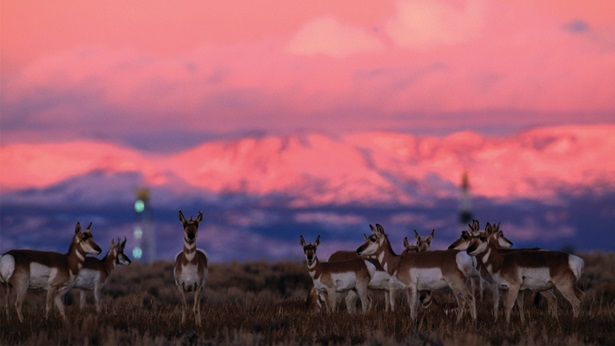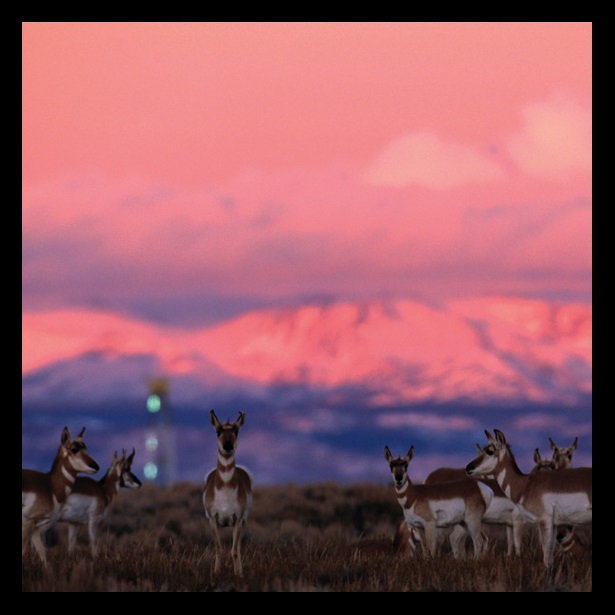New California Law Protects Wildlife Corridors—and a Lot More
Measure follows other states’ efforts to improve driver safety and conserve ecosystems

Sometimes, one year can make all the difference. And for the conservation of wildlife migration corridors, 2022 might be that year.
Since Jan. 1, seven states have enacted laws that provide millions of dollars for constructing wildlife crossings over busy roads while also setting new policy to protect key ecological connections between habitat patches. Almost all these milestones—in Colorado, New Mexico, Oregon, Utah, Washington, Wyoming, and most recently California—break new ground in safeguarding corridors while forging pathways for replicating or expanding projects in the future.
Further, the Safe Roads and Wildlife Protection Act, which Governor Gavin Newsom signed into law on Sept. 30, takes a comprehensive approach to addressing ecosystem connectivity from a transportation perspective, offering more substance for California lawmakers to consider as plans for the 2023 legislative sessions come into focus.
The flurry of state and federal action on this issue follows the rise of wildlife-vehicle collisions throughout the U.S., fueled in part by population growth and road traffic in once-remote and rural areas. These crashes have killed hundreds of drivers and millions of animals and cost $8 billion to $12 billion each year. At the same time, wildlife biologists have leveraged new tracking technology to better understand where, when, and in what numbers wildlife move throughout the year. This data can help inform policy on which areas to conserve and how to improve road safety. In many states, healthy populations of big game are vital to the hunting, fishing, and wildlife-viewing industries that contribute millions of dollars annually to local and regional economies.
The California law offers an excellent model for other states to replicate; here are its four main components:
- The state transportation department, Caltrans, must consult with the California Department of Fish and Game (CDFW) to identify ecological “connectivity areas” throughout the state highway system where the construction of wildlife crossing structures would reduce wildlife-vehicle collisions or enhance wildlife habitat connectivity. These areas, along with an inventory of transportation projects that include wildlife passage features, must be identified by July 2024 and updated every two years.
- For any major transportation project that falls within an identified connectivity area, Caltrans will consult with CDFW to identify ways to maintain or restore habitat connectivity. This may include the use of compensatory mitigation credits—money that is paid by developers who affect habitat elsewhere—to improve wildlife connectivity as part of a construction project, if CDFW concurs.
- Caltrans will develop a list of connectivity-related projects as well as guidelines for implementation by hosting, in part, one or more public workshops. This step, in addition to other implementation steps for the law, will become part of a new Transportation Wildlife Connectivity Remediation Program.
- Finally, the law requires Caltrans to update appropriate design guidance, including the Highway Design Manual, by July 1, 2025, to incorporate design concepts for wildlife crossings and related standardized plans and specifications. This manual serves as a critical guide for how the state approaches the design of almost every component of transportation infrastructure.
The law draws on efforts in other states, such as Oregon and New Mexico, where new policies call for states to identify or designate specific wildlife corridors. In California’s case, the law provides a broad range of considerations that may support a region’s potential as a connectivity area, including sensitive, threatened, or endangered species habitat or places where species’ range shifts may occur as a response to climate change. This approach enables the state to classify broader areas for connectivity prioritization and lessens the focus on the migration or movement of a particular population of animals.
The law also charts new ground by incorporating connectivity design concepts into the Highway Design Manual. By including ecological connectivity, Caltrans will effectively standardize its approach to maintaining and enhancing wildlife movement—something that few states have done.
California’s new wildlife corridors law is a significant contribution to the growing number of state statutes that address ecosystem connectivity as well as driver safety. Better yet, the Legislature appropriated $118 million to the state’s Wildlife Corridor and Fish Passage Program and other connectivity initiatives in its fiscal year 2022 budget, providing the funding capacity for projects that stem from the new law.
The Pew Charitable Trusts advocates nationwide for policy and funding efforts dedicated to wildlife corridor conservation, and we supported the Safe Roads and Wildlife Protection Act from concept to its passage.
Matt Skroch is a project director and David Ellenberger is a senior associate with The Pew Charitable Trusts’ U.S. public lands and rivers conservation project.















